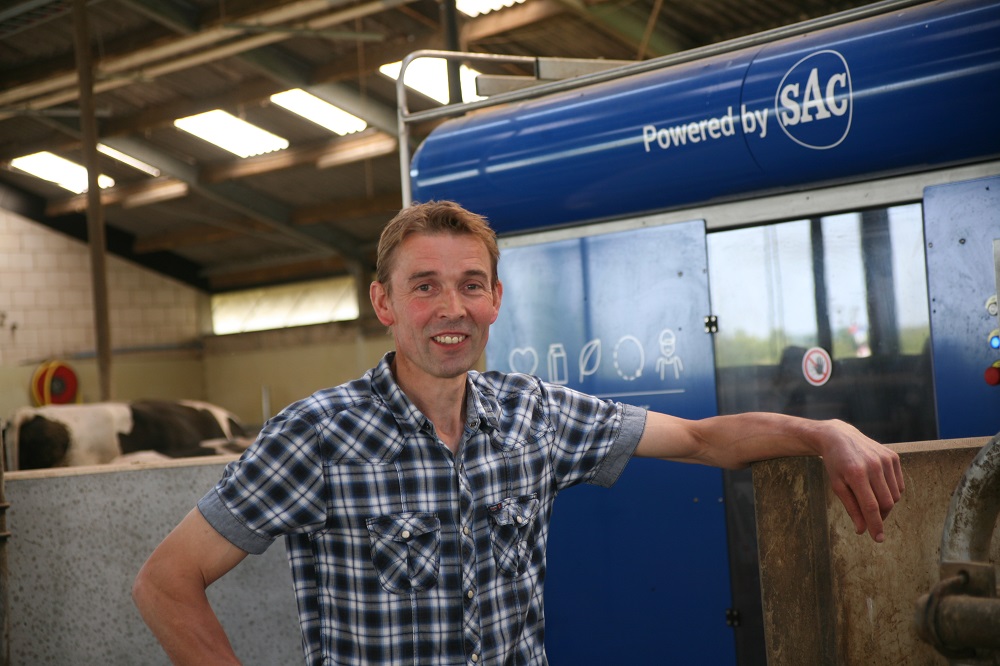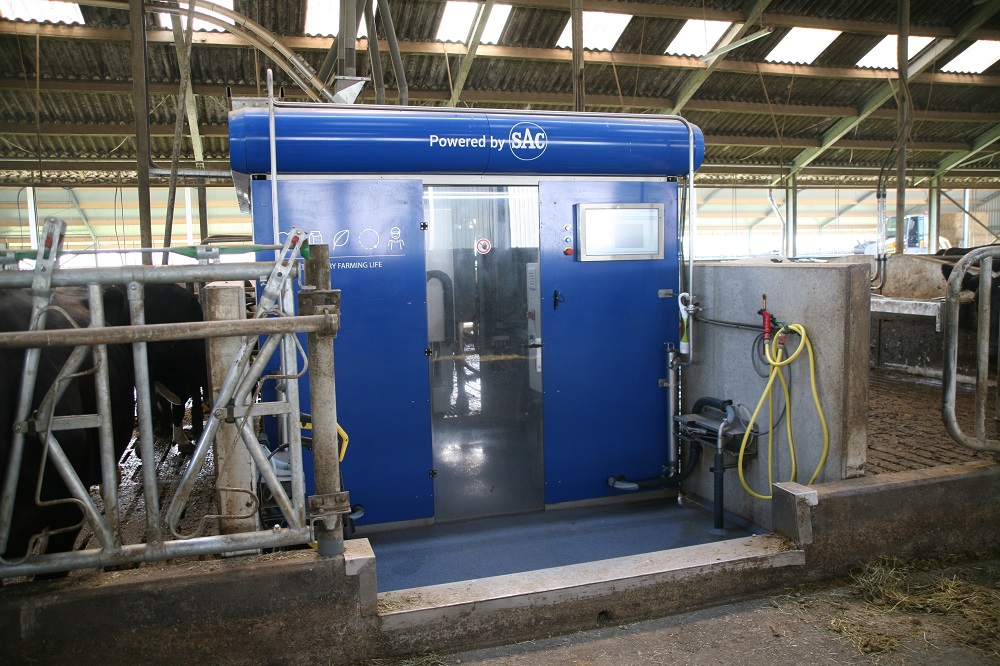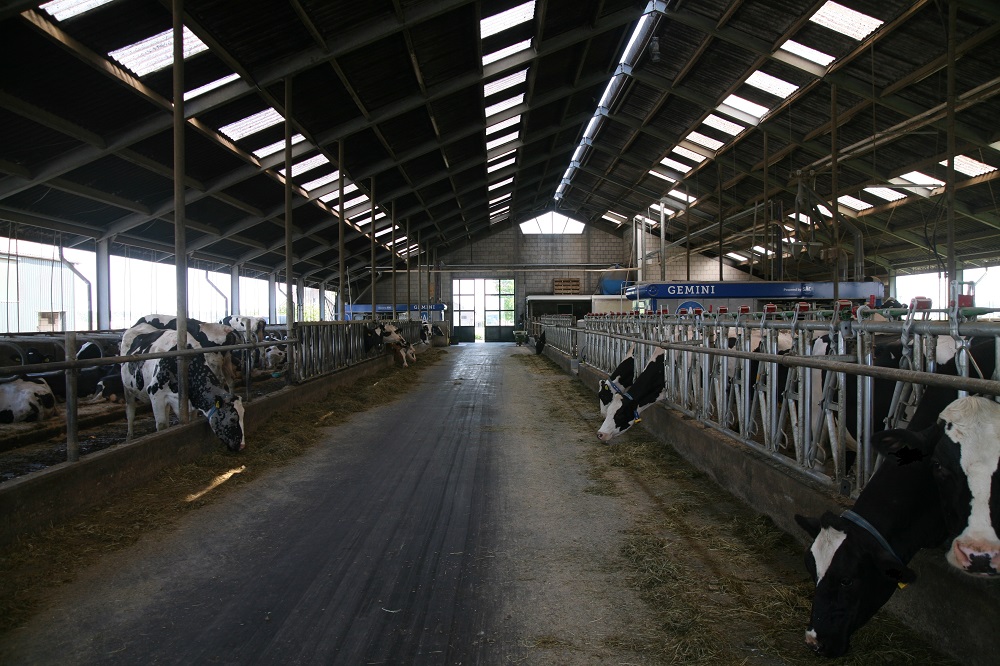On the job
Nico Verkroost: ‘milking is no longer a chore'
Dairy farmer Nico Verkroost has installed three SAC Gemini robots to milk his 130 cows. He owns both a double box and a single box. ‘The single box is used by cows and heifers that require my attention. This works really efficiently.’
‘I already used SAC for milking and my father also used a SAC milking machine. So together, we have 49 years of SAC Milking experience’, explains the Westbroek based dairy farmer Nico Verkroost, proudly. Having decided to milk using robots, choosing SAC was easy, right? ‘Actually no, it wasn’t', says the dairy farmer, laughing. We explored every available option, and looked at other robot brands too. In the end, we opted for SAC Milking again. In every aspect, they clearly emerged as the best option.
Option for outdoor grazing: three boxes
Until July 2022, Nico milked his 130 dairy cows and calves in a 2 x 10 rapid exit milking parlour. But this twenty-two year old parlour was really showing its age. ‘In terms of software and milk meters, a huge upgrade was required, and this price tag would've meant continuing our milking operations for many more years in this milking parlour. And don’t forget the additional costs of paying our employees. About two and a half years ago, I made the decision to switch to automatic milking.’
During the search, ensuring access to outdoor grazing was vital to the process. ‘Two robots wasn’t quite enough. Other brands tried to sell us the two system options, but SAC immediately said that three was the best option. Increased capacity is essential to successful milking.’
User-friendly robot
The Utrecht based dairy farmer was the first user of the Gemini powered by SAC system. ‘This meant that we were pioneers, as the installation process was new for the mechanics too. Quite honestly though, we haven’t experienced any problems. It milks exactly as we want it to, the robot is extremely user-friendly and we soon got used to operating it. In fact, it’s more like three mini milking parlours.' A double box is installed in the barn. This enables two cows to be milked at the same time, while a single robot arm ensures the cows are lined up one after another to ensure a swift milking process. The second robot is positioned on the other side of the feeding alley, where the cows have access to a row of cubicles. ‘This robot is used for heifers and new-milking cows; this works very easily', says Nico, pointing out that there is a separation area behind the robot. ‘When the cow approaches, the robot automatically selects whether the cow can re-enter the separate area.' To successfully separate specific cows, he can create a waiting area by using a barrier. The separation cows can be milked while they are in the separation area via the unique VIP system, to ensure their routine isn’t affected. ‘All the cows that require help or extra attention are grouped together in no time. As I only have to do this for one box. It saves a lot of work. I don’t need to worry about the cows that use the double box.’ In this regard, Nico mentions another important advantage of the SAC Gemini. ‘I can manually attach the cows, which is also very user-friendly.'
First as a concentrate feeder
The dairy farmer is extremely satisfied with how the cows have adapted. ‘The cow adapts in no time; for the farmer though, it takes a bit longer to get used to.' According to Nico, the cows walked pretty much automatically into the new milking system. ‘We soon sent our helpers back home, as it was such a natural process for the cows.' To ensure a smooth process of acclimatisation for the cows, they devised a clever trick. ‘The people at SAC told us to use the robots as concentrate feeders for the first fortnight.' This was easy to realise as the robots were installed in the front and middle of the barn, meaning milking in the old parlour could continue as usual. ‘As the cows were already being given concentrate feed, the system was immediately familiar to them. And as they are comfortable with milking too, the entire process soon felt familiar to the cows.'
Different working routine
At first, Nico needed to find his new working rhythm. ‘On the first morning after installation you get up and realise that you no longer have to milk the cows yourself. So the question is then, what do you do with your time?’ His working routine - ‘you have to get used to it’ - consists of cleaning the system’s camera three times a day and making sure the robot itself stays clean. ‘You have to teach yourself a new way of working, a new rhythm. For example, if I have to treat an individual cow, I enter the method of treatment into the software programme first, and only then do I treat her,’ he explains. ‘I can’t say I have vast amounts of spare time due to robotic milking, it depends on the number of cows and new heifers. If there are no cows suffering from mastitis and only a few cows, then it’s a breeze.' Having thought about it for a little longer, Nico says that he was quicker to complete mowing of the first cut this year. ‘I was able to start earlier in the morning and could carry on longer into the evening. Milking is no longer a daily chore.’ Nico’s wife adds: ‘Psychologically speaking, it was a real change at first. You have to learn to let go and not start to worry if a cow hasn’t been milked for twelve hours.’ The mobile app that Nico regularly uses has also helped them to adapt. ‘This allows me to follow the robot remotely.'
Working with a focus list
Nico indicates that his contact with the cows has also changed. ‘A cow that you don’t see or notice very often is a healthy cow', he summarises. ‘So you start to view the cows in a very different way.' A cow that requires extra attention is highlighted in red on the computer screen. ‘This means she hasn’t been in for milking, which also usually means there is actually something wrong.' First thing every morning, Nico checks the computer’s list of focus cows as he walks into the barn. ‘Then I just go and check the interface on the boxes and the system automatically reduces the length of the list.' He also praises the Gemini’s ease of use. ‘It doesn’t matter which robot I’m in the process of checking; as all three are connected I can access and update all three systems at the same time.'
Mainly heifers
Eight months after the transition to automatic milking, Nico concludes that the performance of his cows has improved. ‘Heifers are clearly producing more milk, the older cows need to have calved again first.' Average production is between 27 and 30 litres per day, for which the nutritional values have been somewhat affected. ‘We have 4.40% fat and 3.65% protein levels; the cows do come in for milking three times a day.' The somatic cell count remains around 150 and that is still falling steadily’, Nico adds. ‘After a transition period like this the somatic cell count often increases for a while, before declining again.' The bacterial count is 12, which is excellent for robotic milking.
We have invested in making our job easier and more enjoyable
Once the robots were up and running, the next phase of the construction plan began, which included a new barn to house young stock, dry cows and a calving pen. Nico removed the old milking parlour himself and replaced it with 25 extra cubicles on the same site. ‘Although we can still increase the number of cows, we won’t go much higher than 140', says Nico. ‘The renovation work and installation of robots means we have invested in making our job easier and more enjoyable. These changes will ensure years of job satisfaction.’




